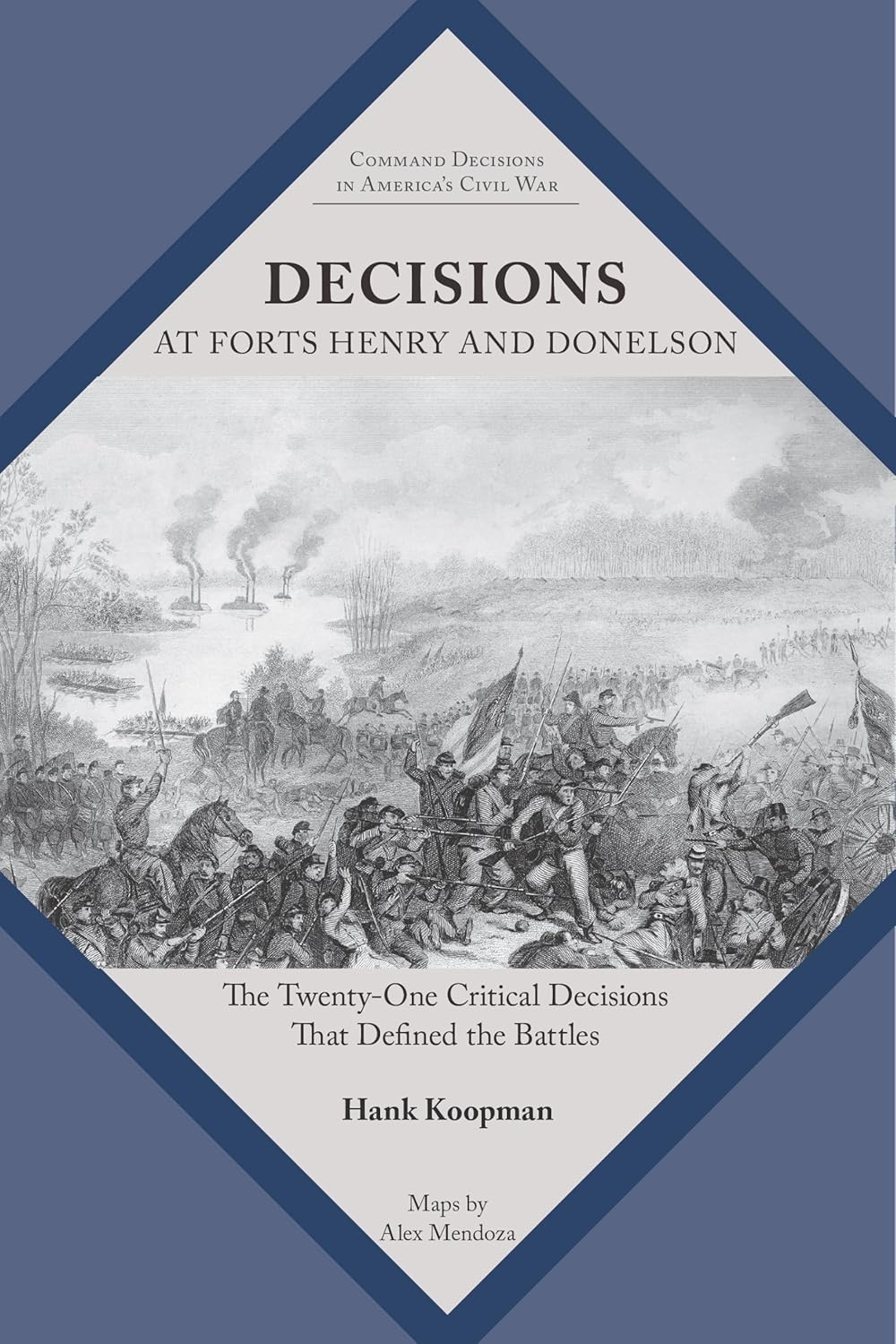Book Review: Decisions at Forts Henry and Donelson: The Twenty-One Critical Decisions that Defined the Battles

 Decisions at Forts Henry and Donelson: The Twenty-One Critical Decisions that Defined the Battles. By Hank Koopman. Knoxville, TN: The University of Tennessee Press, 2025. Softcover, 272 pp. $24.95.
Decisions at Forts Henry and Donelson: The Twenty-One Critical Decisions that Defined the Battles. By Hank Koopman. Knoxville, TN: The University of Tennessee Press, 2025. Softcover, 272 pp. $24.95.
Reviewed by Andrew S. Bledsoe
The University of Tennessee Press’ Command Decisions in America’s Civil War series, now clocking in at dozens of volumes, has proven over the years to provide interesting and fresh analyses of the Civil War’s major campaigns and battles. Hank Koopman, a retired dam engineer and new contributor to the series, has produced another useful volume for readers in Decisions at Forts Henry and Donelson: The Twenty-One Critical Decisions that Defined the Battles.
In the spirit of full disclosure, I have also written a book for the Command Decisions series (Decisions at Franklin), and while the unique approach of the series may not suit every reader, there is no doubt that the structure and approach of these books is unique. Books in the series use a non-traditional methodology to analyze battles and campaigns by examining “critical decisions,” or decisions that result in clear consequences and shape resulting outcomes in the operation. The authors look at these decisions in five phases: Situation, Options, Decision, Result(s)/Impact, and Alternate Decision/Scenario.
The first and often most detailed section, Situation, sets the scene at a pivotal moment in the campaign or battle. It offers the essential background needed to understand and assess the plausible Options for responding to the circumstances. The actual historical Decision is then briefly presented, followed by the Result(s)/Impact section, which explains what occurred and how those outcomes influenced future events. This part places particular emphasis on the lasting consequences of key earlier decisions. Lastly, the optional Alternate Decision/Scenario section explores what might have happened had different choices been made, offering a discussion of alternative historical outcomes.
Koopman identifies a hefty twenty-one critical decisions in the Henry and Donelson Campaign, thirteen for the Union side and eight for Confederates. Most Union decisions are operational, while Confederate decisions are fairly evenly split among operational, tactical, and personnel decisions, though quibblers might take issue with any or all of these approaches.
Koopman’s analysis is tight and incisive, and his writing style is clear. He emphasizes again and again the importance of competent leadership and involvement in operations, and faults Confederate commander Albert Sidney Johnston for remaining too aloof from the messy and quarrelsome triumvirate of Simon B. Buckner, Gideon Pillow, and John B. Floyd, who always seemed at odds with each other during the operations on the Cumberland River.
Ulysses S. Grant and the Union forces, on the other hand, seem much more capable in Koopman’s analysis. While Grant was by no means perfect during the campaign, Koopman finds that the overall performance of the Union high command proved much more solid and flexible under pressure than their Confederate counterparts. The author finds fault with most of the Confederate decisions, including a disastrous choice to retreat after some desperate fighting, and credits the Union forces with tenacity and adaptability that ultimately helped win the day.
Readers should be clear that this volume is not intended to be a complete history of the campaign, but rather, an analysis of key decisions. In that sense, Koopman delivers successfully on the promise and purpose of the series. Maps, a detailed driving tour, and a bibliography complete this useful contribution to our understanding of the Henry and Donelson campaign.
Andrew S. Bledsoe is an associate professor at Lee University in Cleveland, Tennessee. He is the author of Citizen-Officers: The Union and Confederate Volunteer Junior Officer Corps in the American Civil War and coeditor, with Andrew F. Lang, of Upon the Fields of Battle: Essays on the Military History of the American Civil War, and Decisions at Franklin: The Nineteen Critical Decisions That Defined the Battle.